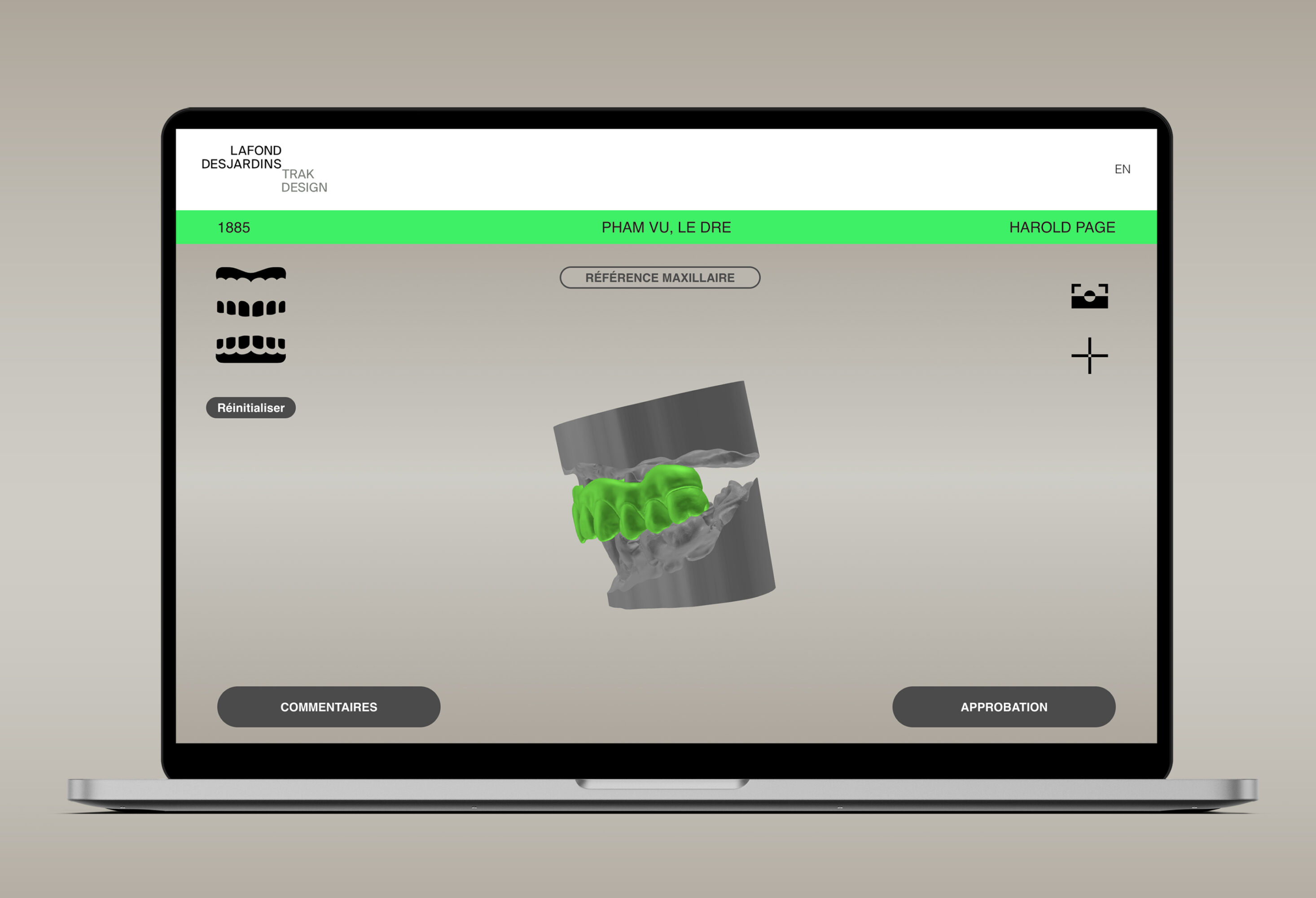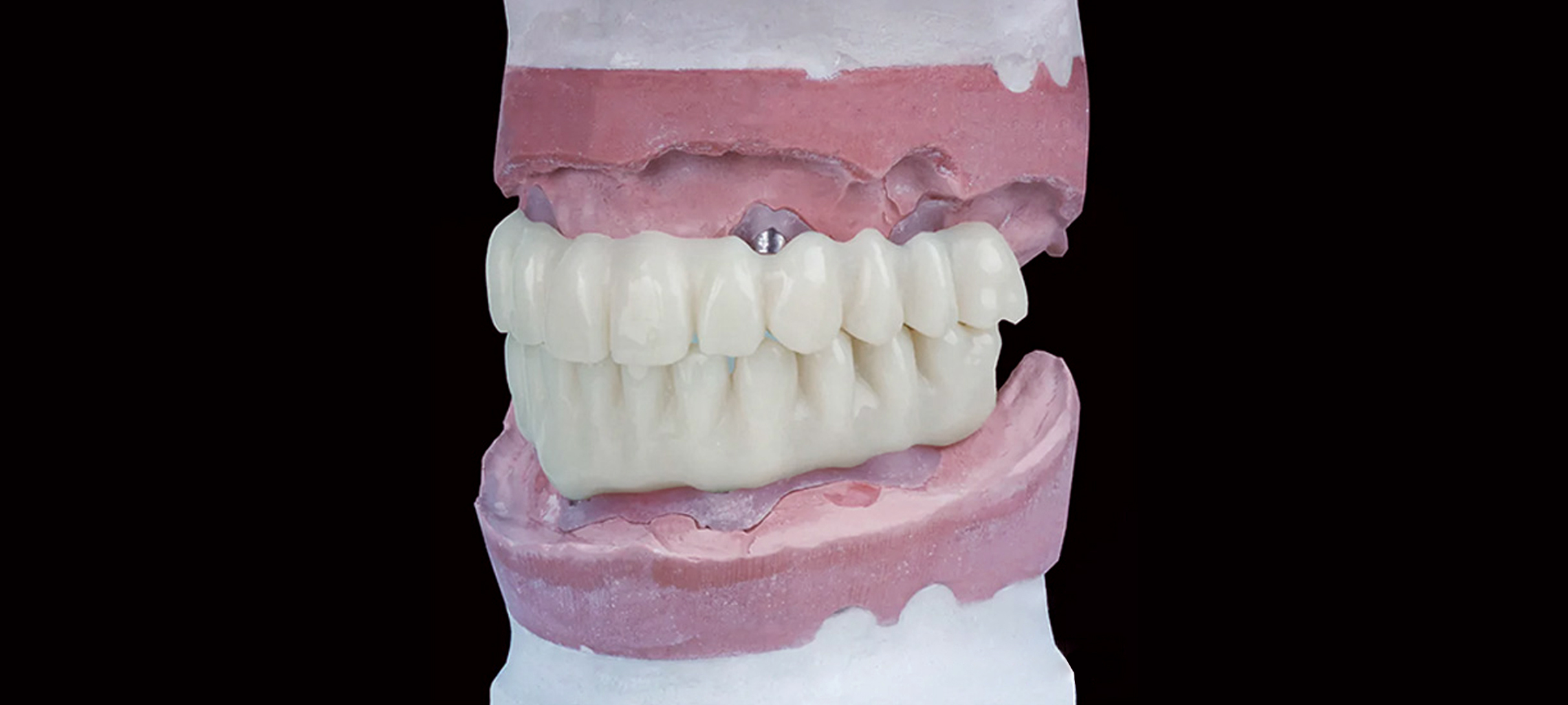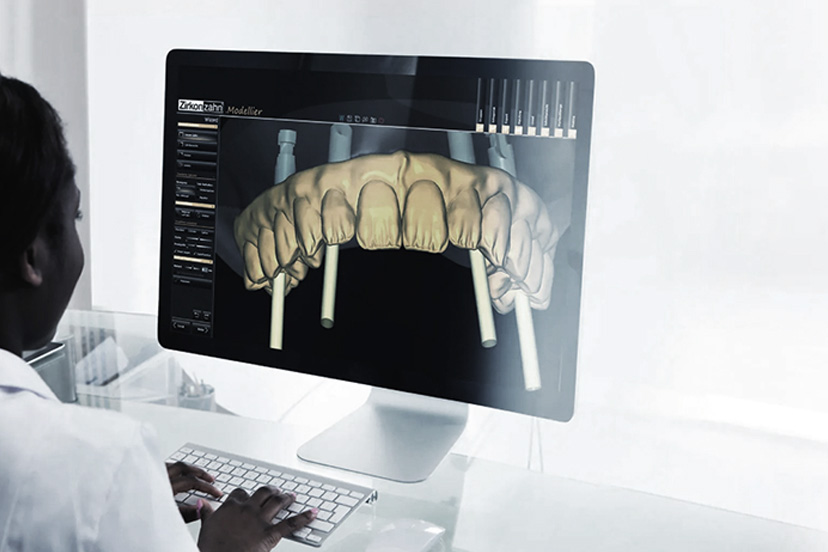
Our participatory design and production workflow allows you to be involved in key stages. This process ensures a highly precise zirconia prosthesis that meets the needs of the patient.

Physical or digital intraoral impressions can be used to create a digital fixed dental prosthesis. All types of files generated by an intraoral scanner are accepted.

Using a Zirkonzahn scanner equipped with three high-definition cameras, the physical or digital impression is imported into computer-aided design software and the patient’s mouth is accurately recreated.
To determine the overall aesthetics of the final product, a temporary arrangement of the teeth on a wax rim is created. The approved set-up is then imported into the 3D design software.

The fixed dental prosthesis is modelled using powerful computer-aided design software. To achieve realistic sculpting and incomparable morphology, the teeth are selected from a tooth library developed by Zirkonzahn.
The digitization of the process allows for:

Visualize the three-dimensional modelling of the product before the prototype is created. The display of diagnostic, preoperative or temporary models, as well as the transparency filter, allows for a thorough comparison of the elements.

To ensure optimal comfort, the patient wears a prototype for a few weeks. Using the TrakDesign platform, you can add notes regarding functional adjustments and aesthetics.

Our technicians use the prototype to carry out virtual corrections. A second 3D dental model is then available on the TrakDesign platform. Once the model is approved, the final machining is initiated.

The fixed dental prosthesis is milled from Prettau zirconia blocks using a high-performance five-axis machine.

To achieve a natural appearance, internal colourings of various shades are hand-applied to each tooth. The zirconia is then sintered in a specialized furnace for 8 hours. For an impressive aesthetic result, the ceramic is layered on the buccal by an experienced ceramist.